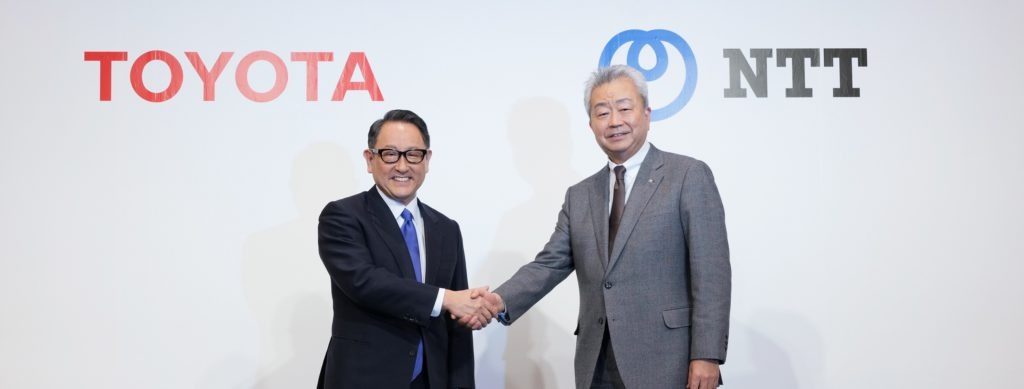Toyota and NTT focus on software and smart cities
25 March 2020

25 March 2020
Toyota Motor Corporation (Toyota) and Nippon Telegraph and Telephone Corporation (NTT) have announced a plan to develop smart cities and software capabilities. They outlined a 200 billion yen (€1.6 billion) investment in their relationship at a conference yesterday (24 March).
The two companies have collaborated on connected car technologies since March 2017 but both have recognised the need to further invest in their relationship. As part of this strengthening, Toyota will take a 2.07% stake in Japan's biggest telecoms company, while NTT will take a 0.9% stake in the carmaker.
Connected by information
The automotive market is facing major changes because of diversified market needs, tightening environmental regulations and the diversification of the mobility business. Meanwhile, the world of telecoms is rapidly advancing due to the development of cloud services, the internet of things (IoT) and artificial intelligence (AI).
′The automobile industry is entering an era in which the very essence of the automobile is undergoing change and in which the goods and services that support people’s lives will be connected by information,' said Akio Toyoda President of Toyota Motor Corporation.
Toyota and NTT will develop a data platform that will amass and analyse information from vehicles, homes and public institutions. This will then be used to form new services, focusing on transportation, energy usage and health.
The platform will be introduced in Toyota's Woven City project near Mount Fuji. The prototype hydrogen-powered, zero-emission metropolitan area is being used to develop incorporated autonomous-driving technologies, AI, robotics and smart homes. The ultimate aim is to have an interconnected network of vehicles, houses and communities.
The smart-city platform will also be introduced in the Shinagawa area in Minato-ku, Tokyo, and will then be introduced to other cities in succession.
Toyoda stressed that with the advancing connectivity and IoT, cars will cease to be objects of personal ownership, but will become ′structural elements of the societal system.' He gave examples of cars acting as emergency power sources and utilising their sensors to create hazard maps.
With NTT as a partner, Toyota looks to harness the capabilities of cars connected within the societal system. ′Expressing this in terms of the human body, I think that cars and houses are like muscles and bones, respectively, while communications are like veins through which flows the blood of information,' Toyoda said.
′NTT, as the main artery, supports blood circulation all the way to the capillaries, moving the entire body. In other words, NTT bears on its shoulders the foundation of the societal system.'
Software first
Toyota and NTT also look to change the positioning of software in the production process. With conventional product development, hardware and software progress is coupled together. But with the speed and evolution of software outpacing that of hardware, product performance and value is being put at risk.
The two companies will look to a ′software-first model.' By separating the development of software and hardware, there will be no need to restrain the evolution of operating systems to the sluggish pace of physical upgrades. A good example is the production of new mobile phones. While new handsets are released yearly, the operating systems which drive them are updated and improved upon throughout the year.
′If we were to express this in terms of carmaking, complete redesigns would be when we have our customers replace their cars with new ones upon our updating the hardware and delivering value by doing so,' Toyoda said. ′Other improvements, such as partial redesigns, would be when we offer new functions and new value by updating the software while owners continue to use the same hardware.'
Systems like advanced driving-assist functions, for which software and data are key, is one example. By having the basic software in place first, data could be collected to bolster AI systems with the potential to add functions in the form of updates.